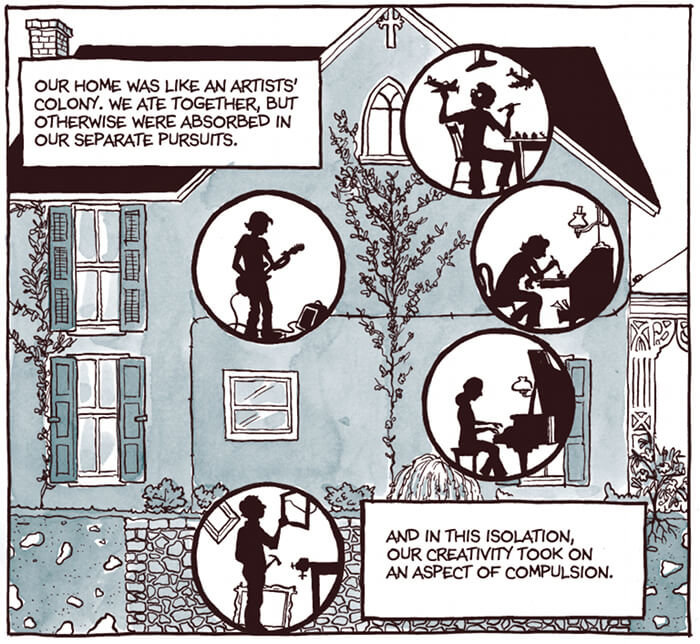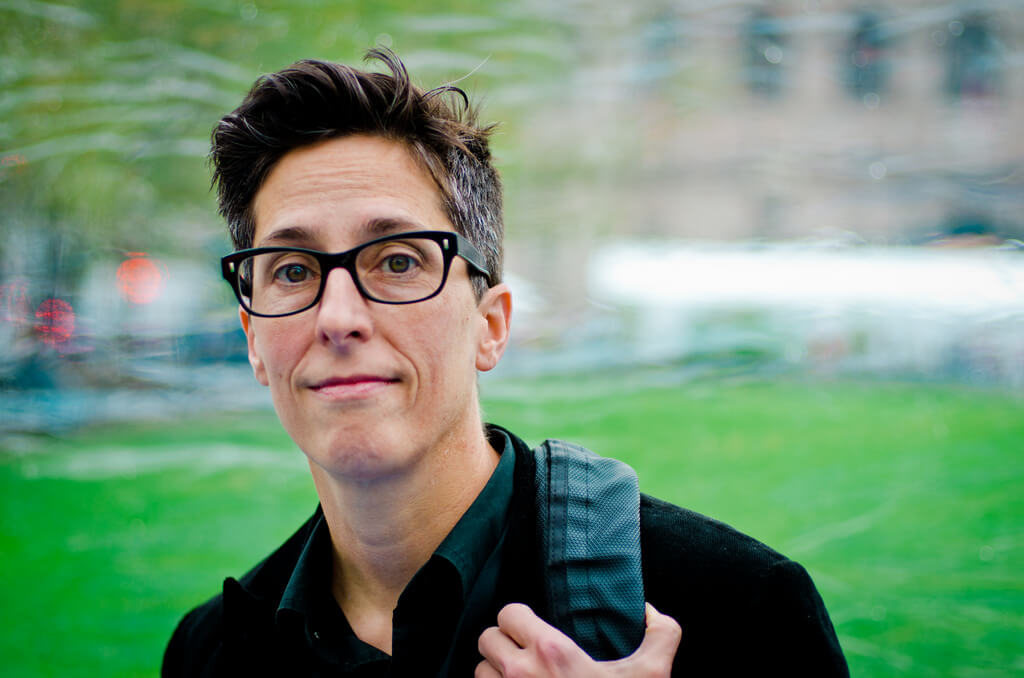
I’m not a voracious consumer of graphic novels, but I’ve been reading one that has seized me in its graphic style and its impossibly tragicomic and beautiful writing. Fun Home, by Alison Bechdel, was published in 2006 to rave reviews and depicted her childhood growing up and coming of age in Pennsylvania in a house full of secrets and treasures; Alison – in the graphic novel and in real life – comes out as a lesbian while at college, realizing in the process that her perfectionist, antiques-obsessed father was also gay and closeted.
In 2013, Fun Home became a musical, winning 5 Tony Awards including Best Musical, and the score by Jeanine Tesoro and book/lyrics by Lisa Kron won a Tony and made history, as the first all-woman team to win for Best Score. (“Fun Home” recently opened in Los Angeles at the Ahmanson Theater, where I saw it last week.)
The “Fun Home” of the title is a kid’s abbreviation for “funeral home,” the setting for Bechdel’s childhood; the name itself is a piece of genius that captures the dramatic and comedic tensions at play in the narrative. Alison and her two brothers (both the characters and the real-life people) grew up in a still-life: in the back room, her father would make people whose lives had gone look lifelike for their funerals; the rest of the house was a meticulously tended, finely-furnished museum of a home, a cultivation of a life that seemed perfect but was far from. “He was an alchemist of appearance, a savant of surface, a Daedalus of decor,” she says of her father in the graphic novel. The writing is brilliant, literarily complex and exists in a gorgeously interwoven relationship with the images; both text and image make their impact separately and as a team.
But some of you may know Bechdel’s name from somewhere else – if you’ve been tuned to film criticism and the challenges of presenting women’s narratives within contemporary film, you may have heard someone ask if a particular film passes “the Bechdel Test“: “whether a work of fiction features at least two women or girls who talk to each other about something other than a man or boy. The requirement that the two women or girls must be named is sometimes added.” This idea first popped up in Bechdel’s cartoon, Dykes to Watch Out For, in 1985, but – as women gain visibility as creators and directors (see Jenji Kohan, Jill Soloway, Ava Duvernay and others), the conversation over elevating women’s stories has also been gaining traction, leading to greater awareness of how these stories are presented. (Bechdel credited the idea to her friend Liz Wallace, so the test is sometimes referred to as the Bechdel-Wallace test.) For fun and facts, check out Bechdeltest.com, a user-edited database of 6500-ish films that have been rated according to three factors. Not shockingly, most action movies fail the test. (Of this year’s Oscar films, “Hidden Figures,” “Fences” and “La La Land” pass…”Moonlight,” “Manchester By the Sea” and “Hacksaw Ridge” don’t.)
This is a fun enough exercise – does your favorite movie pass the Bechdel test?? – but has also led to a greater awareness of gender bias across different fields, from fiction and playwriting to computer coding and science. (You can learn more about the Bechdel Test here at Feminist Frequency.)
So if you’re a writer, or creator of any type, and you’re including women in your work – which of course, you probably should – consider the Bechtel-Wallace test while creating female characters…give them important roles to play and insights to impart that impact the dialogue and action of the work.
If you’re a fan of graphic novels, pick up Fun Home. And if you’re not, pick it up anyway – this might be your “gateway” to other tales graphically rendered, with an economy of text that enables the brilliance of both text and image to shine.



Grok Nation Comment Policy
We welcome thoughtful, grokky comments—keep your negativity and spam to yourself. Please read our Comment Policy before commenting.